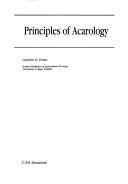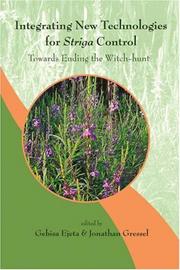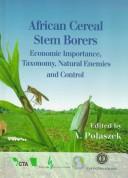| Listing 1 - 10 of 389 | << page >> |
Sort by
|
Article
Year: 1992 Publisher: [S.l.] : [s.n.],
Abstract | Keywords | Export | Availability | Bookmark
 Loading...
Loading...Choose an application
- Reference Manager
- EndNote
- RefWorks (Direct export to RefWorks)
Book
ISBN: 9252007636 9789252007630 Year: 1979 Publisher: Rome : FAO,
Abstract | Keywords | Export | Availability | Bookmark
 Loading...
Loading...Choose an application
- Reference Manager
- EndNote
- RefWorks (Direct export to RefWorks)

ISBN: 0851986668 0851986676 Year: 1991 Publisher: Wallingford CAB International
Abstract | Keywords | Export | Availability | Bookmark
 Loading...
Loading...Choose an application
- Reference Manager
- EndNote
- RefWorks (Direct export to RefWorks)
Book
Year: 2006 Publisher: [Bozeman, Mt.] : U.S. Dept. of Agriculture, Natural Resources Conservation Service,
Abstract | Keywords | Export | Availability | Bookmark
 Loading...
Loading...Choose an application
- Reference Manager
- EndNote
- RefWorks (Direct export to RefWorks)
Book
Year: 2007 Publisher: Newtown Square, PA : U.S. Dept. of Agriculture, Forest Service, Northern Research Station,
Abstract | Keywords | Export | Availability | Bookmark
 Loading...
Loading...Choose an application
- Reference Manager
- EndNote
- RefWorks (Direct export to RefWorks)
The gypsy moth is a destructive, nonindigenous pest of forest, shade, and fruit trees that was introduced into the United States in 1869, and is currently established throughout the Northeast and upper Midwest. The Slow the Spread Program is a regional integrated pest management strategy that aims to minimize the rate of gypsy moth spread into uninfested areas. The premise of the Slow the Spread Program is to deploy extensive grids of pheromone-baited traps (>100,000 traps per year) along the expanding population front to identify and subsequently eradicate newly establishing populations to prevent them from growing, coalescing, and contributing to the progression of the population front. This report provides a brief history of the gypsy moth in North America, describes the dynamics of gypsy moth spread, and then details the technological and operational aspects of implementing the Slow the Spread Program.

ISBN: 1281121851 9786611121853 9812771506 9789812771506 9789812707086 9812707085 9781281121851 6611121854 Year: 2007 Publisher: New Jersey World Scientific
Abstract | Keywords | Export | Availability | Bookmark
 Loading...
Loading...Choose an application
- Reference Manager
- EndNote
- RefWorks (Direct export to RefWorks)
Witchweeds (Striga species) decimate agriculture in much of Africa and parts of Asia, attacking the major cereal grains and legumes, and halving the already very low yields of subsistence farmers. Several years of research have provided promising technologies, based on the fundamental biology of the parasite-host associations, for dealing with this scourge. However, there is an apparent realization that these technologies will fail because highly successful weeds such as Striga evolve resistance to all types of controls unless proven methods are integrated with each other for a more sustainabl
Weeds --- Witchweeds --- Integrated control.
Book
ISBN: 1780648022 1780648014 Year: 2017 Publisher: Oxfordshire, England ; Boston, Massachusetts : CABI,
Abstract | Keywords | Export | Availability | Bookmark
 Loading...
Loading...Choose an application
- Reference Manager
- EndNote
- RefWorks (Direct export to RefWorks)
This book provides up-to-date, comprehensive coverage of research and applications of IPM in tropical regions. It explores the agro-ecological framework of IPM and emerging technologies in chemical and biological methods central to pest control, and by a crop-based approach details IPM applications in tropical food crops, fibre crops and forests.
Book
ISBN: 0511752350 Year: 2007 Publisher: Cambridge : Cambridge University Press,
Abstract | Keywords | Export | Availability | Bookmark
 Loading...
Loading...Choose an application
- Reference Manager
- EndNote
- RefWorks (Direct export to RefWorks)
Since the early days of integrated pest management a sound ecological foundation has been considered essential for the development of effective systems. From time to time, there have been attempts to evaluate the ways in which ecological theory is exploited in pest control, and to review the lessons that ecologists learn from pest management. In the last 20 years there have been many developments within the contribution of ecological theory to integrated pest management. This book captures some of the new themes in both pest management and ecology that have emerged and provides an updated assessment of the role that basic ecology plays in the development of rational and sustainable pest management practices. Major themes are examined, assessing the significance and potential impact of recent technological and conceptual developments for the future of integrated pest management.

ISBN: 0851991750 Year: 1998 Publisher: Oxon, UK ; New York, NY, USA : CAB International in association with the ACP-EU Technical Centre for Agricultural and Rural Co-operation (CTA),
Abstract | Keywords | Export | Availability | Bookmark
 Loading...
Loading...Choose an application
- Reference Manager
- EndNote
- RefWorks (Direct export to RefWorks)
Stem borers --- Grain --- Integrated control --- Diseases and pests --- Integrated control
Book
Year: 2001 Publisher: Washington, D.C.
Abstract | Keywords | Export | Availability | Bookmark
 Loading...
Loading...Choose an application
- Reference Manager
- EndNote
- RefWorks (Direct export to RefWorks)
Pesticides --- Agricultural pests --- Pests --- Integrated control --- Integrated control
| Listing 1 - 10 of 389 | << page >> |
Sort by
|

 Search
Search Feedback
Feedback About UniCat
About UniCat  Help
Help News
News